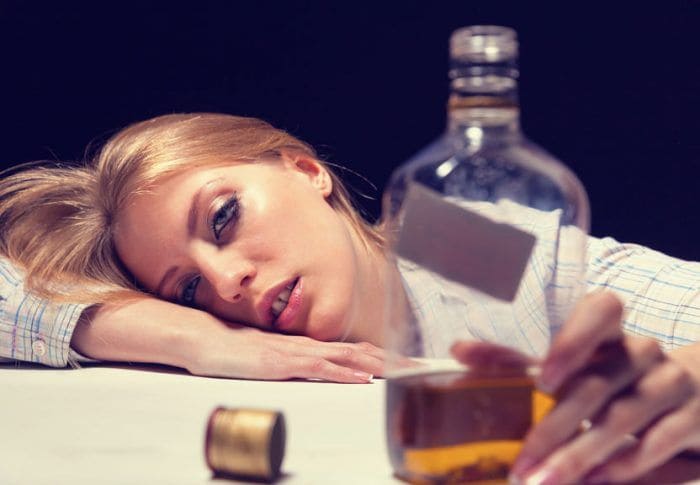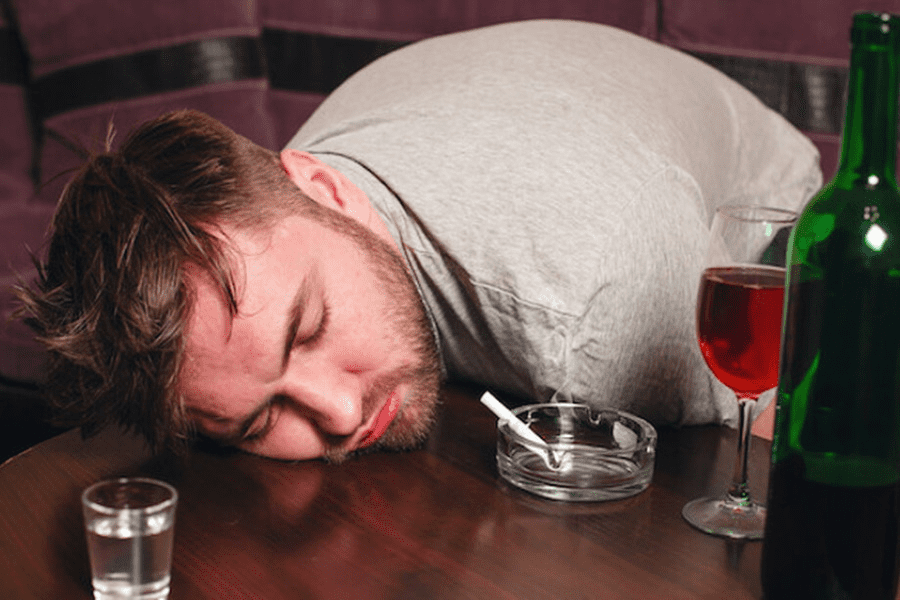How much wine to get drunk? It’s a question that I’m sure many of us have asked ourselves at some point. I remember a time when I went out with some friends and we decided to have a few glasses of wine. Before I knew it, I was feeling a bit tipsy and my friends were suggesting we order another bottle. It got me thinking about how much wine it takes to reach that point of being “drunk.” Since then, I’ve done some research and learned a lot about the factors that affect alcohol tolerance and how much wine is safe to drink. So, let’s dive in and explore the answer to that age-old question: how much wine to get drunk?
Can You Get Drunk of Wine?
Yes, it is possible to get drunk from wine. Wine contains alcohol, which can impair your judgment, coordination, and motor skills if consumed in excess. The amount of wine it takes to get drunk varies based on several factors. It is important to drink wine in moderation and know your limits to avoid negative consequences such as health risks, accidents, and impaired decision-making.
What Is a Standard Drink of Wine?
In the United States, a standard drink of wine is equivalent to 5 ounces, which typically contains around 12% alcohol. This means that one standard drink of wine contains roughly 14 grams of pure alcohol, according to the National Institute on Alcohol Abuse and Alcoholism (NIAAA).
Keep in mind that different types of wine can have varying alcohol contents, so the number of standard drinks in a bottle or glass of wine can vary.
Factors that Affect Your Alcohol Tolerance
There are several factors that can affect your alcohol tolerance, including:
- Body weight and composition: People with more body mass and higher water content tend to have a higher alcohol tolerance.
- Gender: Women generally have a lower alcohol tolerance than men due to differences in body composition and enzyme levels.
- Age: As people age, their alcohol tolerance tends to decrease due to changes in body composition and metabolism.
- Genetics: Differences in how your body metabolizes alcohol can be influenced by your genetic makeup.
- Tolerance: Regular alcohol consumption can lead to an increased tolerance over time, meaning it takes more alcohol to feel its effects.
- Food intake: Drinking on an empty stomach can lead to a higher and faster rise in blood alcohol concentration.
- Medications: Certain medications can interact with alcohol and affect your tolerance.
- Mental health and mood: Stress, anxiety, and other mental health factors can affect how you perceive the effects of alcohol.
- Rate of consumption: Drinking alcohol quickly can lead to a higher and faster rise in blood alcohol concentration.
- Drinking history: Previous episodes of heavy alcohol consumption can lead to long-term changes in your tolerance.

How Much Alcohol is in Wine? – Wine Alcohol Content
Wine’s alcohol content can vary greatly depending on the type of wine and the winemaking process. Here is a breakdown of the different categories of wine based on their alcohol by volume (ABV) percentages:
| Category of Wine | ABV Range | Example |
| Low Alcohol Wines | Under 12.5% ABV | Riesling, Moscato, Vinho Verde |
| Moderately Low Alcohol Wines | 12.5% to 13.5% ABV | Pinot Grigio, Sauvignon Blanc, Chianti |
| High Alcohol Wines | 13.5% to 14.5% ABV | Zinfandel, Shiraz, Cabernet Sauvignon |
| Very High Alcohol Wines | Over 14.5% ABV | Port, Sherry, Madeira |
Blood Alcohol Concentration (BAC) and How It Relates to Wine Consumption
Blood alcohol concentration (BAC) is a measure of the amount of alcohol present in the bloodstream. BAC results are often given as a percentage of blood alcohol content. When it comes to wine consumption, BAC levels can be influenced by the alcohol content of the wine, the amount consumed, and how quickly it is consumed. The following are typical BAC results and their associated effects on the body, according to MedlinePlus:
- Sober: 0.0 percent BAC
- Legally intoxicated: 0.08 percent BAC
- Very impaired: 0.08-0.40 percent BAC. At this level, you may experience difficulty walking and speaking, as well as confusion, nausea, and drowsiness.
- At risk for serious complications: Above 0.40 percent BAC. At this level, you may be at risk for coma or even death.
Does Wine Take Longer to Get You Drunk?
It is a common misconception that wine takes longer to get you drunk than other types of alcoholic beverages. In reality, the rate at which alcohol affects the body depends on several factors such as body weight, gender, age, tolerance, and the alcohol content of the beverage.
While wine typically has a lower alcohol content than hard liquor, it can still lead to intoxication if consumed in excess. The rate at which the body absorbs and metabolizes alcohol can vary from person to person and can be influenced by factors such as food intake, medications, and overall health.

How much Wine to Get Drunk?
How many glasses of wine to get drunk? The amount of wine it takes to get drunk can vary based on several factors, including body weight and composition, tolerance, and the alcohol content of the wine. However, as a general rule, the standard amount of wine to get drunk is usually around three to four glasses. This is because the Blood Alcohol Content (BAC) level typically reaches the minimum amount of drunkenness at 0.25 percent, which is calculated based on your weight.
How much wine to get drunk first time?
For someone who is drinking wine for the first time, it can take as little as two glasses of wine to get drunk, depending on various factors such as body weight and composition, gender, age, and tolerance. Additionally, the alcohol content of the wine can play a role in how quickly you become intoxicated.
It is crucial to be aware of your limits and drink in moderation, especially if you are not familiar with the effects of alcohol on your body. Starting with a smaller amount of wine and gradually increasing can help you determine your tolerance and avoid negative consequences such as impaired judgment, accidents, and health risks.
How much wine to get drunk by weight?
Here is a chart that outlines the Blood Alcohol Content (BAC) levels that may result from drinking 12 ounces of wine, based on weight:
| Weight | Blood Alcohol Content (per 12 oz. of wine) |
| Under 100 lbs | 0.09 |
| 101-150 lbs | 0.08 |
| 151-200 lbs | 0.06 |
| 201-250 lbs | 0.04 |
| 200 lbs and up | 0.03 |
How much champagne to get drunk?
In general, it takes about one four-ounce glass of champagne to reach a Blood Alcohol Content (BAC) level of 0.08%, which is considered legally drunk in the United States. However, the amount of champagne it takes to get drunk can vary based on several factors such as body weight, gender, age, and tolerance.

How much white wine to get drunk?
On average, it can take as little as two glasses of white wine consumed within an hour for a person weighing less than 250 pounds to reach a level of legal intoxication. However, the amount of white wine it takes to get drunk can vary based on several factors that are shown above.
How much Barefoot wine to get drunk?
It is recommended to drink Barefoot wine in moderation, which typically means one glass per hour for individuals of legal drinking age. Consuming 4-6 glasses of wine, which could be equivalent to 1.5 to 2 bottles, in a short period of time could lead to a high Blood Alcohol Content (BAC) level and negative consequences
How much cooking wine to get drunk?
It is important to note that cooking wine is not intended for drinking and can be dangerous if consumed in excess. The alcohol content of cooking wine can vary, but it is generally higher than that of regular wine due to added salt and other ingredients.
As with any alcoholic beverage, consuming two glasses of cooking wine in an hour can lead to legal intoxication unless you weigh 250 pounds or more. It is important to use cooking wine only as directed in recipes and to not consume it as a beverage.
If you want to add wine to your cooking, it is recommended to use regular wine instead of cooking wine, as it typically has a lower alcohol content and is safer to consume in moderation.
How much sparkling wine to get drunk?
Generally, two to four standard servings of sparkling wine can be enough to intoxicate the average person. If you do choose to drink sparkling wine, make sure to enjoy it for its taste and quality rather than just trying to get drunk. By drinking responsibly and in moderation, you can still enjoy the delicious flavors of sparkling wine without overindulging and risking your health and safety.
Signs of Intoxication
Here are some common signs of intoxication that may be exhibited by someone who has consumed alcohol:
- Slurred speech or difficulty speaking clearly
- Impaired coordination or difficulty walking
- Loss of balance or stumbling
- Delayed reflexes or reaction time
- Blurred or impaired vision
- Changes in behavior or mood, such as aggression or depression
- Nausea or vomiting
- Difficulty concentrating or paying attention
- Memory impairment or blackouts
- Inappropriate or risky behavior
- Fatigue or drowsiness

7 Stages of Intoxication
Here are the stages of intoxication that can occur as someone consumes alcohol:
- Sobriety or Low-level Intoxication: At this stage, the person has consumed only a small amount of alcohol, and their behavior and judgment are relatively normal.
- Euphoria: As the alcohol begins to affect the brain, the person may experience feelings of euphoria, relaxation, and reduced inhibitions.
- Excitement: As the person continues to drink, they may become more talkative and excitable, with impaired judgment and coordination.
- Confusion: As the level of alcohol in the bloodstream increases, the person may become confused, with impaired speech, balance, and motor skills.
- Stupor: At this stage, the person is severely intoxicated, with impaired consciousness and the inability to function normally.
- Coma: In extreme cases, the person may slip into a coma, a state of unconsciousness from which they cannot be awakened.
- Death: In rare cases, excessive alcohol consumption can lead to respiratory failure, heart failure, or other complications that can be fatal.
Risk of Drinking Too Much Wine
According to the Centers for Disease Control and Prevention (CDC), drinking too much wine or alcohol can have negative health consequences. Here are some risks associated with excessive alcohol consumption:
- Alcohol poisoning: Consuming too much wine can lead to alcohol poisoning, a potentially life-threatening condition that can cause confusion, vomiting, seizures, and difficulty breathing.
- Impaired judgment and accidents: Drinking too much wine can impair your judgment and coordination, increasing the risk of accidents, falls, and injuries.
- Liver disease: Long-term, excessive consumption of wine or other alcoholic beverages can cause liver damage, leading to liver disease or failure.
- Cancer: Heavy alcohol consumption, including wine, has been linked to an increased risk of certain types of cancer, such as breast cancer and colorectal cancer.
- Cardiovascular disease: While moderate wine consumption has been linked to a reduced risk of heart disease, excessive consumption can actually increase the risk of cardiovascular problems such as high blood pressure, stroke, and heart failure.
- Mental health issues: Heavy alcohol consumption, including wine, can lead to depression, anxiety, and other mental health issues.
Ways To Drink Wine Without Getting Drunk
Here are some ways to enjoy wine without getting drunk:
- Drink slowly: Sipping your wine slowly and taking breaks between drinks can help your body process the alcohol more effectively, reducing the risk of getting drunk.
- Choose low-alcohol wines: Opt for wines with lower alcohol content, such as sparkling wine or white wine, instead of higher alcohol content red wines.
- Drink with food: Consuming wine with food can slow down the absorption of alcohol into the bloodstream, reducing the risk of getting drunk.
- Stay hydrated: Drinking plenty of water before, during, and after consuming wine can help your body process the alcohol and prevent dehydration.
- Set limits: Be aware of your limits and drink in moderation, never exceeding the recommended daily alcohol intake limit.
- Avoid drinking on an empty stomach: Consuming wine on an empty stomach can lead to a quicker absorption of alcohol, increasing the risk of getting drunk.
- Know your tolerance: Understanding your personal alcohol tolerance and sticking to your limits can help you enjoy wine without getting drunk.
Remember that excessive consumption of wine or any type of alcohol can lead to negative consequences such as impaired judgment, health risks, and alcohol poisoning. It is recommended to drink in moderation and never operate a vehicle or machinery while under the influence of alcohol.
FAQs
Can 1 glass of wine make you drunk?
It depends on several factors such as body weight, gender, age, tolerance, and the alcohol content of the wine. While one glass of wine may not make most people drunk, it can still lead to intoxication if consumed quickly or if someone has a low tolerance to alcohol.
How long does it take for wine to affect you?
The effects of wine can begin to be felt within minutes of consumption, with peak Blood Alcohol Concentration (BAC) levels typically reached within 30 to 90 minutes after consumption.
Does wine make you sleepy?
Wine can have a sedative effect on some people due to the presence of the compound melatonin. However, excessive wine consumption can disrupt sleep patterns and lead to other negative consequences such as impaired judgment and health risks.
Does wine help with anxiety?
While some people may feel relaxed and less anxious after drinking wine, excessive consumption can lead to negative consequences and is not a recommended way to manage anxiety. It is important to seek appropriate professional help if you are struggling with anxiety or other mental health issues.
Is wine a depressant or stimulant?
Wine is classified as a depressant, as it can slow down the central nervous system and impair cognitive and physical function.
Does wine give you dopamine?
Wine consumption can stimulate the release of dopamine, a neurotransmitter associated with feelings of pleasure and reward. However, excessive consumption can lead to negative consequences and is not a recommended way to increase dopamine levels.
Who should not drink wine?
Individuals who are pregnant or nursing, under the legal drinking age, have a history of alcoholism or addiction, have certain medical conditions, or are taking certain medications should avoid wine or any other alcoholic beverages.
Is wine forbidden in the Bible?
No, wine is not forbidden in the Bible. In fact, wine is mentioned numerous times in the Bible as a symbol of celebration, prosperity, and spiritual blessings. However, the Bible also warns against the excessive consumption of wine, which can lead to drunkenness and sinful behavior. Ephesians 5:18 says, “Do not get drunk on wine, which leads to debauchery. Instead, be filled with the Spirit.”
What not to eat when drinking wine?
There are certain foods that may not pair well with wine or can even negatively affect the taste of the wine. These include spicy or heavily seasoned foods, overly sweet desserts, and acidic or vinegar-based dishes. It is generally recommended to pair wine with foods that complement its flavors and enhance the overall dining experience.
What time should you not drink wine?
It is recommended to avoid drinking wine late at night or close to bedtime, as it can disrupt sleep patterns and lead to negative consequences such as impaired judgment and health risks.
Conclusion
In short, determining how much wine to get drunk is not a simple matter. It depends on a variety of factors, including body size, gender, age, tolerance, food intake, genetics, and medications. Moreover, the effects of wine consumption on the body, such as blood alcohol concentration, can vary widely from person to person. While moderate wine consumption has been linked to health benefits, excessive consumption can have negative consequences. Therefore, it is important to understand your limits and drink responsibly. If you are unsure how much wine is safe for you to drink, it is always best to err on the side of caution and abstain.
I’m Chen Mina, from Vol de Nuit, who has a special passion for bartending, especially mixing wine, beer, and cooktail. Here you will find content about alcoholic beverages, I will bring you knowledge that few people know about this drink.





